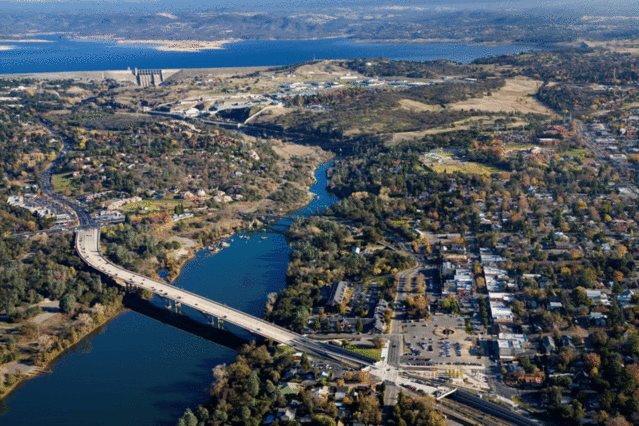From the Open-Publishing Calendar
From the Open-Publishing Newswire
Indybay Feature
Historic Negro Bar, California a World Heritage Site to be considered.
In 1848, the discovery of Gold just above Rancho Rio De Los Americanos, his land along the American River Parkway, sparked the world's first global story. The Gold Mining Town of Negro Bar, California is worthy of world class preservation.

Our "African Founding Father of California" helped establish today's Port of San Francisco as his home. Honorable William Alexander Leidesdorff, Jr. received a Mexican land grant of over 35,000 acres of land to bring overnight fresh fruits and vegetables to market.
In 1848, the discovery of Gold just above Rancho Rio De Los Americanos, his land along the American River Parkway, sparked the world's first global story.
In 1849, the Gold Mining Town of Negro Bar, California was established as the transportation hub for the Gold Mining District.
Leidesdorff Ranch/California Gold Rush/National Underground Railroad Network to Freedom /Pony Express/Sacramento Valley Railroad (1840-1975) may meet the criteria for a UNESCO World Heritage Site.
One hundred years later the United Nations officially comes into existence in San Francisco.
In 1945, representatives of 50 countries met in San Francisco at the United Nations Conference on International Organization to draw up the United Nations Charter.
Those delegates deliberated on the basis of proposals worked out by the representatives of China, the Soviet Union, the United Kingdom and the United States.
The Charter was signed on 26 June 1945 by the representatives of the 50 countries. Poland, which was not represented at the Conference, signed it later and became one of the original 51 Member States.
The United Nations Educational, Scientific, and Cultural Organization — is a key part of the United Nations. Created in 1945 by Ministers of Education from China, the U.K., U.S., and USSR, the organization was set up to promote peace through educational, scientific, and cultural reforms.
UNESCO’s mission is simple but far-reaching: ”to contribute to the building of peace, the eradication of poverty, sustainable development and intercultural dialogue through education, the sciences, culture, communication and information.”
In the years since its inception, the organization has focused on numerous challenges and fought against social and humanitarian injustice the world over.
Among its most significant achievements is the 1978 Declaration on Race and Racial Prejudice, which states that all human beings are equal no matter where they are from.
The World Heritage Committee was formed in 1976, and UNESCO’s subsequent World Heritage List was first inscribed in 1978.
Each of the World Heritage Site in the United States has been classified as either of cultural, natural, or mixed importance, and therefore worthy of UNESCO’s ongoing research and protection.
In 1848, the discovery of Gold just above Rancho Rio De Los Americanos, his land along the American River Parkway, sparked the world's first global story.
In 1849, the Gold Mining Town of Negro Bar, California was established as the transportation hub for the Gold Mining District.
Leidesdorff Ranch/California Gold Rush/National Underground Railroad Network to Freedom /Pony Express/Sacramento Valley Railroad (1840-1975) may meet the criteria for a UNESCO World Heritage Site.
One hundred years later the United Nations officially comes into existence in San Francisco.
In 1945, representatives of 50 countries met in San Francisco at the United Nations Conference on International Organization to draw up the United Nations Charter.
Those delegates deliberated on the basis of proposals worked out by the representatives of China, the Soviet Union, the United Kingdom and the United States.
The Charter was signed on 26 June 1945 by the representatives of the 50 countries. Poland, which was not represented at the Conference, signed it later and became one of the original 51 Member States.
The United Nations Educational, Scientific, and Cultural Organization — is a key part of the United Nations. Created in 1945 by Ministers of Education from China, the U.K., U.S., and USSR, the organization was set up to promote peace through educational, scientific, and cultural reforms.
UNESCO’s mission is simple but far-reaching: ”to contribute to the building of peace, the eradication of poverty, sustainable development and intercultural dialogue through education, the sciences, culture, communication and information.”
In the years since its inception, the organization has focused on numerous challenges and fought against social and humanitarian injustice the world over.
Among its most significant achievements is the 1978 Declaration on Race and Racial Prejudice, which states that all human beings are equal no matter where they are from.
The World Heritage Committee was formed in 1976, and UNESCO’s subsequent World Heritage List was first inscribed in 1978.
Each of the World Heritage Site in the United States has been classified as either of cultural, natural, or mixed importance, and therefore worthy of UNESCO’s ongoing research and protection.
Add Your Comments
We are 100% volunteer and depend on your participation to sustain our efforts!
Get Involved
If you'd like to help with maintaining or developing the website, contact us.
Publish
Publish your stories and upcoming events on Indybay.
Topics
More
Search Indybay's Archives
Advanced Search
►
▼
IMC Network


